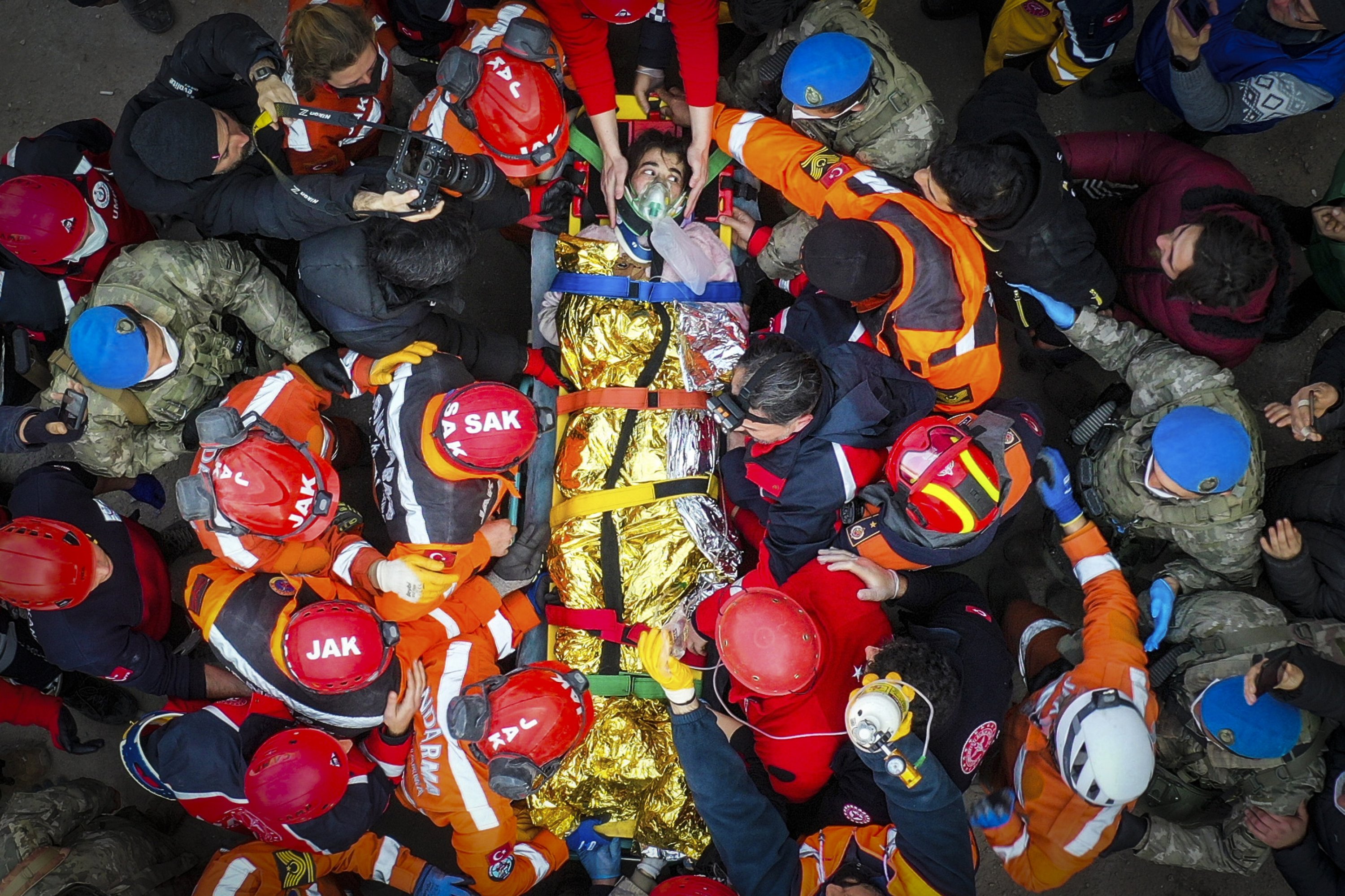© Turkuvaz Haberleşme ve Yayıncılık 2025
As the sun sets on the first year after devastating earthquakes hit the southeast, Türkiye's narrative is one of resilience, unity and unwavering determination. While the road to recovery reportedly seems long for the country, the collective efforts, both national and international, stand as a testament to the indomitable spirit of a nation rebuilding not just structures but lives.
On Feb. 6, 2023, Türkiye was shaken by deadly earthquakes, later dubbed as the “Disaster of the Century,” in which over 53,537 lives were lost, 107,213 were injured and over 800,000 independent units, encompassing homes and businesses, were severely damaged. The seismic waves, each with magnitudes exceeding 6.5, reverberated across a vast expanse, covering 120,000 square kilometers (46,332 square miles). An estimated 14 million people found themselves in the quake's impact zone.
The triple seismic onslaught, with epicenters in Kahramanmaraş, left an indelible mark on the landscape and the lives of millions.
In the wake of this catastrophic event, the response was swift and extensive. Eleven provinces, including Kahramanmaraş, Hatay, Adıyaman, Osmaniye, Gaziantep, Şanlıurfa, Malatya, Diyarbakır, Adana, Kilis and Elâzığ, alongside 124 districts and 6,929 neighborhoods, were affected. The disaster response mobilized a force of 11,488 international and 35,250 local search and rescue personnel, alongside 142,000 security personnel.
Since then, various financial aid, spanning rent assistance, support payments, property aid, evacuation support and demolition support, have been extended to alleviate the burdens borne by the affected citizens.
A brief information report on what happened after the disaster was released on Thursday by Türkiye’s Directorate of Communications. From construction to education, from economy to sports, the directorate’s report listed the numerical data for the impacted zones in the country.
According to the report, soon after the earthquakes took place, the affected regions saw the establishment of 414 container cities, providing refuge for over 215,000 displaced individuals. These temporary settlements were equipped with essential services, including schools, mosques, playgrounds, mobile kitchens and psychosocial support centers.
A beacon of hope emerged through collaborative efforts by the Disaster and Emergency Management Authority (AFAD) and Turkish Red Crescent (Kızılay), introducing the "Esen Kart" system, ensuring efficient distribution of food and necessities to those residing in container cities.
The rebuilding phase commenced with an ambitious plan to construct 307,000 independent units, encompassing residences, rural houses, businesses, barns and stores. Reconstruction incentives, including grants and loans, were unveiled, providing a lifeline for those eager to rebuild their lives. Notably, a groundbreaking credit agreement between the Ministry of Transport and Infrastructure and the World Bank injected TL 51 billion ($1.6 billion) into crucial infrastructure projects.

In parallel, the cultural and historical fabric of the affected regions received attention. The Ministry of Culture and Tourism undertook the monumental task of assessing and restoring over 8,500 registered cultural assets, kickstarting restoration projects for 171 significant sites, with ongoing plans for 29 more.
Economic revival initiatives unfolded through a concerted effort to rejuvenate businesses. The micro, small and medium-sized enterprises (MSMEs) were granted support up to TL 750,000, tailored to the extent of their damages. The collaboration with the World Bank injected a vital source of $450 million, fostering a swift financial recovery for 39,680 businesses, receiving a total support payment of TL 12.8 billion.
The agricultural sector, a cornerstone of Türkiye's economy, received comprehensive support, with a total of TL 14.15 billion allocated for farmers. Livestock farmers, grappling with substantial losses, benefited from a state-sponsored TARSİM initiative, offering TL 37 million in compensation. The government, recognizing the intricate web of dependencies within the sector, facilitated the distribution of 16,000 tons of feed, 5 million doses of free foot-and-mouth disease vaccines and 55 tons of food for street animals.
In the realm of education, a multifaceted approach unfolded. The Ministry of National Education orchestrated the repair and construction of educational structures, planning a staggering 22,039 new classrooms with an investment exceeding TL 62.6 billion. The measures included accommodating 754,180 disaster victims in teacher lodges and evening art schools, distributing 80,000 sets of stationery to students and establishing 82 special education support tents/container classrooms.

As Türkiye sought to rebuild its cultural identity, the Ministry of Culture and Tourism erected libraries in temporary settlements, fostering a sense of normalcy amid the upheaval. Over 700,000 individuals participated in 45,000 cultural events, benefiting from 450,000 free book distributions.
In the sports arena, the Ministry of Youth and Sports orchestrated a variety of initiatives to provide psychosocial support and recreational activities for the affected youth. Events such as "Yurdumuz Yuvanızdır" (“Our Homeland is Your Home”) engaged 420,236 individuals, offering a platform for psychological support through 5,533 activities.
In a bid to ensure that the world remained informed about the developments in the earthquake-stricken areas, the Directorate of Communications extended support to 1,800 international journalists from 64 different countries, facilitating their coverage of ongoing efforts and challenges.
